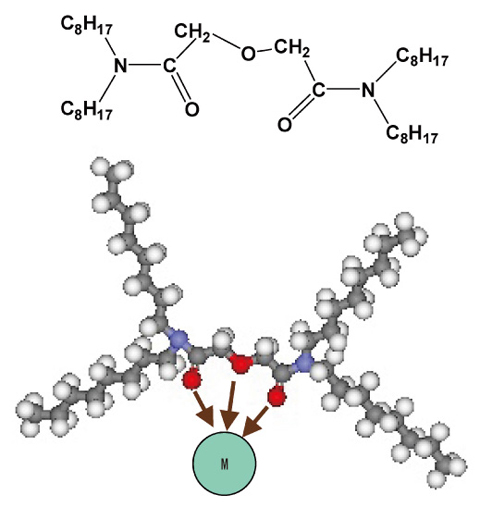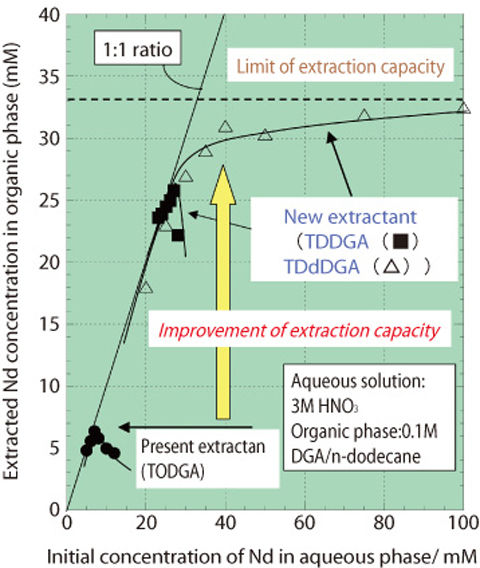
Fig.7-8 Structure of TODGA


Fig.7-9 Loading capacity of DGA compounds
There are long lived minor actinides (MA), e.g., neptunium (Np), americium (Am) and curium (Cm) in spent nuclear fuel (SF), and these MA are present in the high level radioactive liquid waste (HLW) remaining after recovery of uranium and plutonium. In order to reduce the long-term environmental risk, the transmutation of the radioactive nuclides has been proposed and strong extractants for the recovery of MA have been investigated. We have developed TODGA (N,N,N',N' - tetraoctyl-3-oxapentanediamide, Fig.7-8) for the total recovery of MA. This extractant has three oxygen donors and behaves as a tridentate ligand. The tridentate extractants have never been studied in the chemical treatment of SF and HLW. TODGA has a powerful ability to separate tri- and tetra-valent metals, and higher extraction capability than other representative extractants.
In a series of the process adaptation work, the extraction capacity of TODGA was measured (Fig.7-9). The extraction capacity is indispensable to determine the optimal conditions for the planned process. Improving on TODGA, we synthesized TDDGA (N,N,N',N' -tetradecyl-3-oxapentanediamide, Fig.7-9) and TDdDGA (N,N,N',N' -tetradodecyl-3-oxapentanediamide, Fig.7-9), which have 4-5 times higher extraction capacity than TODGA, and suppress the third phase formation.
We also synthesized water-soluble DGA as masking reagents. These materials have the following advantages, (1) high solubility in water, (2) strong complexation with MA, and (3) neutral donor which can be used in acidic solution. These new ligands have been tested for the reverse extraction of MA. Testing is in progress, and the results suggest that this ligand will be a useful reagent for a planned innovative separation method of MA from HLW.
Not only the novel extractant, TODGA, which has very powerful complexing ability, but also improvements on TODGA, TDDGA and TDdDGA showing higher extraction capacity and water-soluble DGA with high ability to reverse-extract MA have been developed.